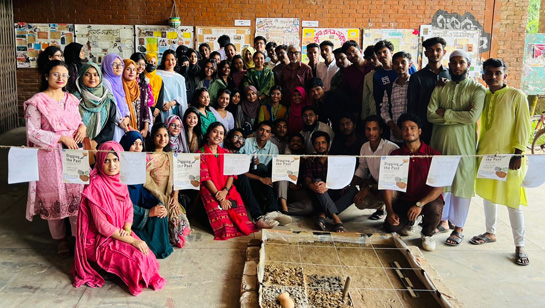Archeology wall magazine exhibition held at JU
Archeology wall magazine exhibition held at JU

A unique wall magazine exhibition on archaeology, titled “Digging the Past”, has begun at Jahangirnagar University (JU), initiated by students of the Department of History. The two-day exhibition was inaugurated at 11am yesterday (18 August) at the university’s newly constructed Arts Faculty building.
The exhibition has been organised by the first-year, second-semester students of the 53rd batch of the History department as part of their course “Introduction to Archaeology” (Course 109). Through the display, the students have attempted to show how material remains (artifacts) and environmental evidence (ecofacts) provide insights into the diverse aspects of past cultures.
A total of ten informative and aesthetically designed wall magazines are on display. Among them, one titled “The Interrelationship Between Archaeology and History” has drawn particular attention.
The exhibition also features four wall magazines on artifacts, three on ecofacts, and two on archaeological sites and contexts. Especially popular among visitors is “Archaeological Soil and Coprolites”, which creatively highlights how ancient soil deposits and fossilised faeces reveal past human and animal diets, lifestyles, and cultural patterns. Additionally, students created a model excavation site to demonstrate archaeological methods in practice. Artifacts collected during a surface survey in Sherpur’s Dhunat Mor forest area, Bogura, conducted by history student Md Saddam Hossain, are also being showcased.
The inaugural ceremony was attended by JU Dean of Arts and Humanities Prof Mozammel Haque, Chairman of the History Department Prof Emran Jahan, and faculty members and students from various departments. Students from Jagannath University’s History Department also joined the event.
The initiative was guided and supervised by Associate Professor Sabikun Nahar of JU’s Archaeology Department, who teaches the course. The students said her inspiration and support enabled them to successfully organise the exhibition. They also expressed hopes of continuing similar work in the future, adding that a synthesis of history and archaeology is essential to uncovering a more objective understanding of the cultural history of ancient Bengal.


